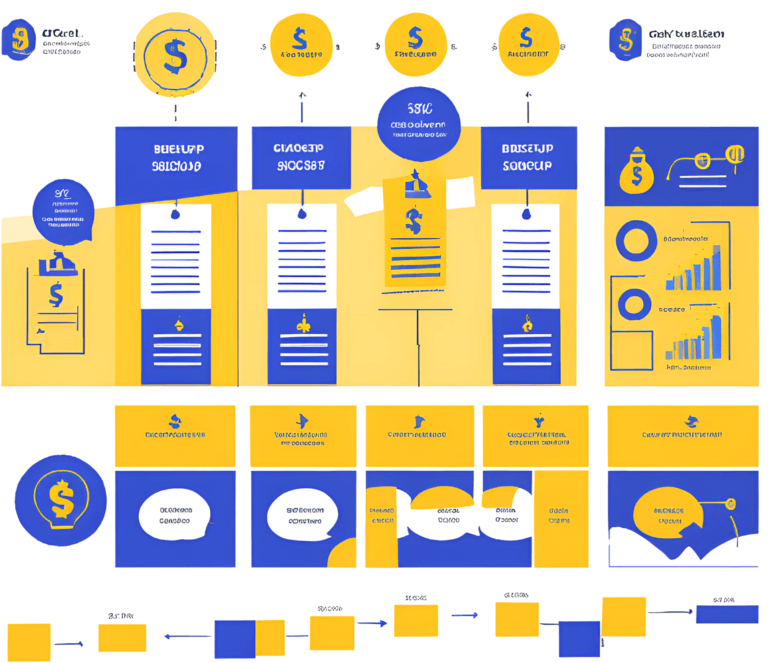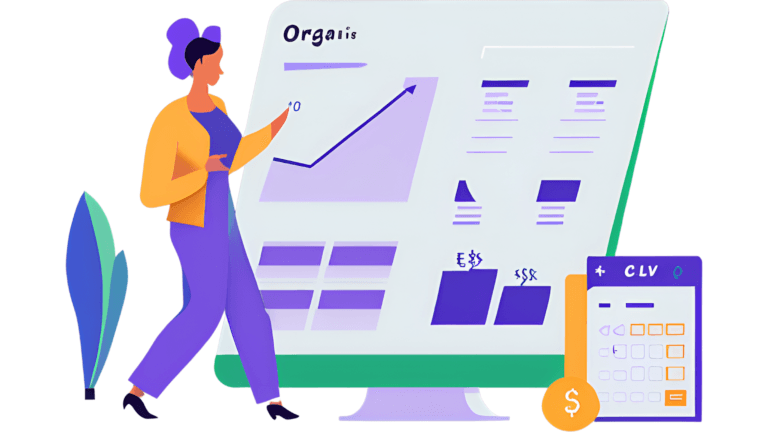Managing a coworking space without proper planning is like driving a car blindfolded. The reliance on manual scheduling and guesswork often results in wasted time, inefficiency, and frustration. But there’s good news data-driven metrics, or Key Performance Indicators (KPIs), can provide a clear roadmap to success. For coworking space operators, KPIs aren’t just numbers; they’re tools to help track progress, optimize operations, and ensure long-term growth.
This blog explores essential KPIs like occupancy rates, revenue per square foot, and ROI. With the help of tools such as a coworking space business plan, financial models, and projections, operators can plan effectively and achieve their goals.
Coworking spaces are revolutionizing how businesses and freelancers work, but running one isn’t without challenges. Fluctuating member numbers, uneven revenue streams, and managing a variety of resources can be overwhelming. This is where KPIs for measuring success in coworking spaces become indispensable. They empower operators to:
- Prediction accuracy of future trend.
- Prediction accuracy of future trend.
- Optimize resources for maximum profitability.
By the end of this guide, you’ll have a firm grasp of the most crucial KPIs and how they can elevate your coworking space.
Why KPIs Matter for Coworking Spaces
KPIs are the heartbeat of a coworking business. They provide measurable insights that highlight strengths, unveil weaknesses, and guide data-backed decision making. If these KPIs are not tracked, coworking operators risk. Missing out on much revenue-optimizing opportunities.
- Missing out on revenue-optimizing opportunities.
- Inefficient use of space.
- Poor member retention.
With KPIs, operators are able to identify these challenges and confidently predict growth in the future. This is where tools like revenue forecasting for coworking spaces become important, giving operators the chance to predict their income and modify strategies accordingly.
Top KPIs for Measuring Success in Coworking Spaces
To completely understand a coworking space’s performance, several key metrics must be followed. Below we’ve categorized the same into three membership, financial, and operational KPIs.
Membership and Occupancy Metrics
1) Occupancy Rate
Occupancy rate measures how much of your coworking space is being used at any given time.
Formula:
Occupancy Rate (%) = (Occupied Spaces / Total Spaces) × 100
A high rate of occupancy signals demand, but a low one may be related to the wrong pricing or insufficient promotion. Regular follow-up will guarantee timely correction.
2) Member Retention Rate
Retention is a direct reflection of member satisfaction. Retaining members reduces marketing costs and builds a stable community.
Formula:
Retention Rate (%) = [(Renewed Members / Total Members at Start of Period) × 100]
3) Average Length of Stay
This metric shows how long members usually stay with your coworking space. The longer the tenures, the more satisfied your customers are and the more consistent your revenue streams.
Formula:
Average Length of Stay = Total Membership Months / Total Members
Financial Metrics
1) Revenue per Square Foot
This KPI measures the revenue generated by each square foot of your coworking space. It is a very important metric to understand the efficiency of your space.
Formula:
Revenue per Square Foot = Total Revenue / Total Square Footage
By including this metric in the financial model for a coworking space, one can find weak areas and better optimize them.
2) Gross Margin
Gross margin measures profit after taking into account all overheads, which include rent, utilities, etc.
Formula:
Gross Margin (%) = [(Revenue – Costs) / Revenue] × 100
A healthy gross margin reflects efficient cost management.
3) Return on Investment (ROI)
ROI calculates how profitable your coworking space is compared to the initial investment. It’s especially crucial if you plan to attract investors.
Formula:
ROI (%) = [(Net Profit / Total Investment) × 100]
To maximize ROI, operators can focus on increasing occupancy and introducing premium services.
4) EBITDA: (Earnings Before Interest, Taxes, Depreciation, and Amortization)
EBITDA is a key financial metric that measures the operating profitability of your coworking space, excluding non-operational expenses like taxes and interest. It provides a clear picture of your workspace’s financial health and efficiency, making it an essential metric for internal assessment and attracting investors.
Formula:
EBITDA = Net Income + Interest + Taxes + Depreciation + Amortization
EBITDA helps coworking space operators evaluate performance irrespective of financing structures or accounting practices.
To improve EBITDA, operators can:
- Optimize Operational Costs: Reduce unnecessary expenses through efficient resource management.
- Increase Revenue Streams: Introduce value-added services like private offices, event spaces, or premium memberships.
- Enhance Occupancy: Focus on marketing strategies to maintain high occupancy rates.
By tracking and improving EBITDA, coworking spaces can demonstrate strong financial performance to stakeholders and investors.
Read More: Why EBITDA is important for startup valuation?
Acquisition and Growth Metrics
1) Cost Per Acquisition (CPA)
This represents the cost incurred to obtain a new member. The lower the cost, the better your usage of the marketing budget.
Formula:
CPA = Total Marketing Spend / Number of New Members
2) New Members per Month
It can be monitored by tracking how many new members there are every month. It would give an easy view of how the trend of growth is working. It reflects how effective the marketing campaigns have been.
Space Utilization Metrics
Revenue per Member
This metric helps operators know how much revenue each member generates. This way, they can fine-tune their pricing strategies and add value to memberships.
Formula:
Revenue per Member = Total Revenue / Total Members
Utilization of Reservable Spaces
Coworking spaces often have conference rooms or event spaces that are available for reservation. Utilization rate measures how efficiently these spaces are used.
Formula:
Utilization Rate (%) = (Reserved Hours / Available Hours) × 100
Low utilization levels indicate probable opportunity for proper promotion or even repricing.
Advanced Metrics for Comprehensive Analysis Of Coworking Space
Net Promoter Score (NPS): The NPS measures member satisfaction and loyalty by inquiring how likely members are to advocate for your space.
Community Engagement Metrics: Monitoring for attendance at events as well as participant engagement in network activities is a benchmark of community building.
Lead-to-Member Conversion Rate: This metric will assess how effective your sales funnel is, one that measures how well inquiries are converted into membership.
How to Use KPIs Effectively
Setting Benchmarks: Set realistic goals for your KPIs based on industry standards.
Using Technology for Tracking: Management software for coworking, like OfficeRnD or essensys, makes it very easy to track and analyze in real-time.
Regular Reviews: Frequent update & review your coworking space financial model template for KPI trends allows the operators to remain agile and proactively adjust their strategies.
Common Challenges in Tracking KPIs
- Inconsistent Data Collection: Ensure it is accurate and consistent.
- Overcomplicating Metrics: Be focused on impactful KPIs.
- Ignoring Qualitative Insights: Combine Numerical Data and Member Feedback.
Future Trends in Measuring Coworking Space Success
AI and Predictive Analytics
Artificial Intelligence (AI) and predictive analytics are transforming how coworking spaces operate and measure their success. These tools analyze historical data and provide actionable insights to improve space utilization, member satisfaction, and revenue generation.
- Trend Analysis: AI can identify patterns in member preferences, allowing operators to predict peak usage times, popular amenities, or preferred layouts. This helps in tailoring offerings to meet member expectations.
- Dynamic Pricing: Predictive models can optimize pricing strategies based on demand forecasts, competitor rates, and market trends.
- Operational Efficiency: By analyzing maintenance data, AI can preemptively schedule repairs and minimize disruptions, enhancing overall member experience.
- Retention Insights: Predictive analytics can assess factors influencing member churn and suggest interventions, such as personalized offers or improved services.
Adopting AI-driven analytics not only helps coworking spaces make data-driven decisions but also ensures they remain competitive in an increasingly crowded market.
Sustainability Metrics
As businesses across industries move toward sustainability, coworking spaces are embracing green practices to attract environmentally conscious professionals and organizations. Measuring sustainability performance has become a vital success factor.
- Energy Efficiency: Monitoring energy consumption through smart meters and IoT devices helps identify areas where energy usage can be optimized, reducing costs and environmental impact.
- Waste Reduction: Tracking recycling rates, composting efforts, and waste diversion can provide insights into waste management efficiency.
- Carbon Footprint Monitoring: Spaces can calculate and report their carbon emissions, allowing them to set tangible reduction targets and showcase their commitment to sustainability.
- Sustainable Design Impact: Metrics such as natural light usage, water conservation, and the adoption of renewable energy sources highlight the environmental benefits of workspace design.
- Green Certifications: Achieving and maintaining certifications like LEED or WELL can be tracked as a benchmark of success in sustainability efforts.
By aligning with sustainability goals, coworking spaces not only attract a broader audience but also contribute to a healthier planet, which increasingly resonates with members and investors alike.
Conclusion
KPIs for measuring the success of a coworking space are the fundamental building blocks to sustainable growth. From occupancy rates and revenue per square foot to returns on investment, operators can enhance operations and accurately predict future trends with tools like a coworking space financial model or financial projections template.
Start tracking these KPIs today and turn your coworking space into a thriving hub for productivity and innovation. With the right data, the possibilities are endless.






